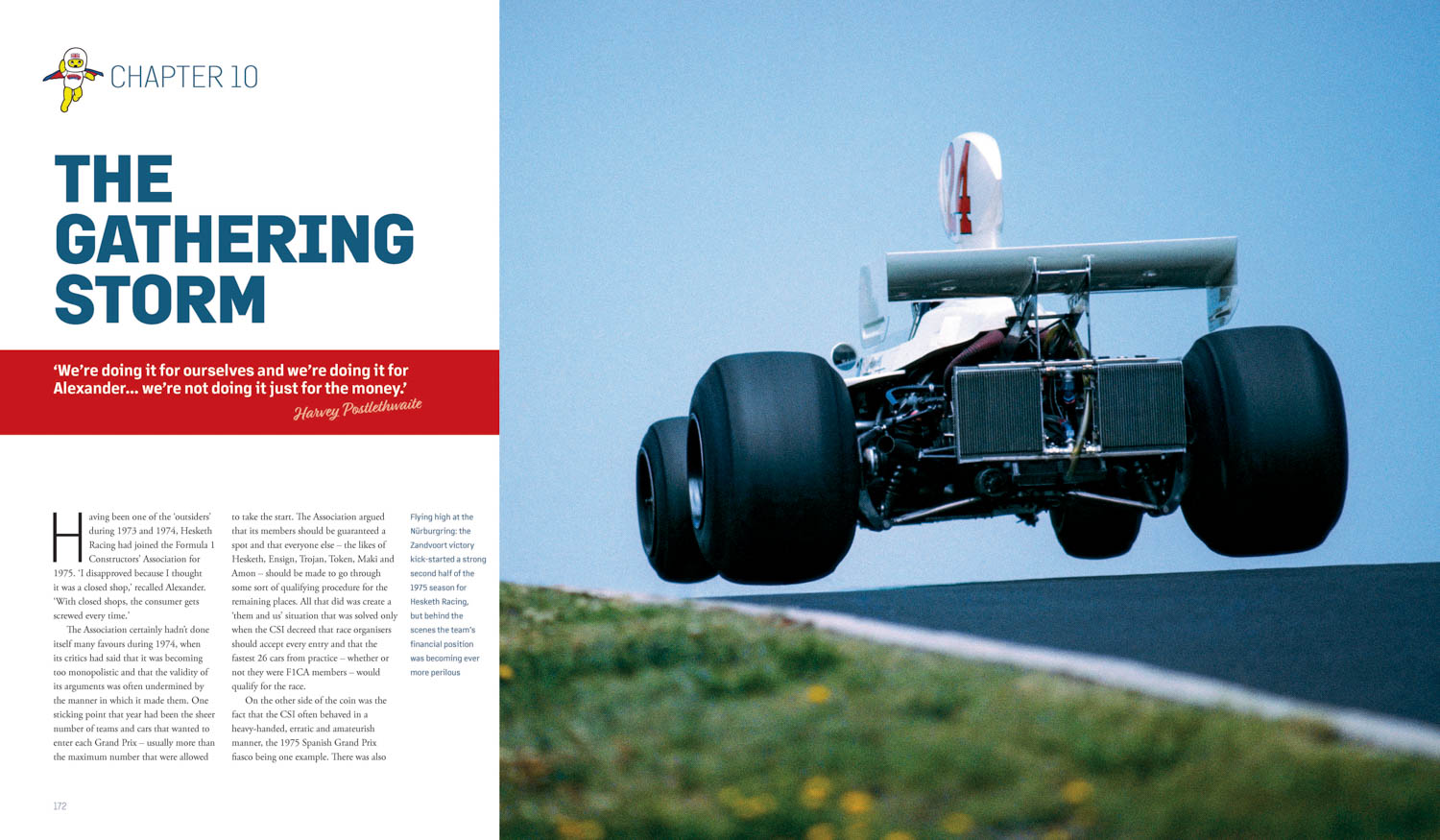
Today, Formula 1 cars come from gigantic factories in which hundreds of people work on the concept and construction of the racing cars.
It used to be all on a much smaller scale, and one even came from the stables of the English Easton Neston estate, home of Baron Hesketh. A new book about the period of this Hesketh F1 team has now been released by Porter Press titled: Superbears. The title refers to the team’s logo featuring a bear wearing a helmet and waving the British flag.

Porter Press we don’t need to introduce to you. They have often delighted us with historical classics on the Mclaren F1, the Ferrari 250 GTO and the Porsche 956 and 962, among others, all claiming a place in the “masterpieces” category. They release only high-quality car and motorsport-related books and today another one has been added: Superbears about the history of England’s Hesketh Formula One team.
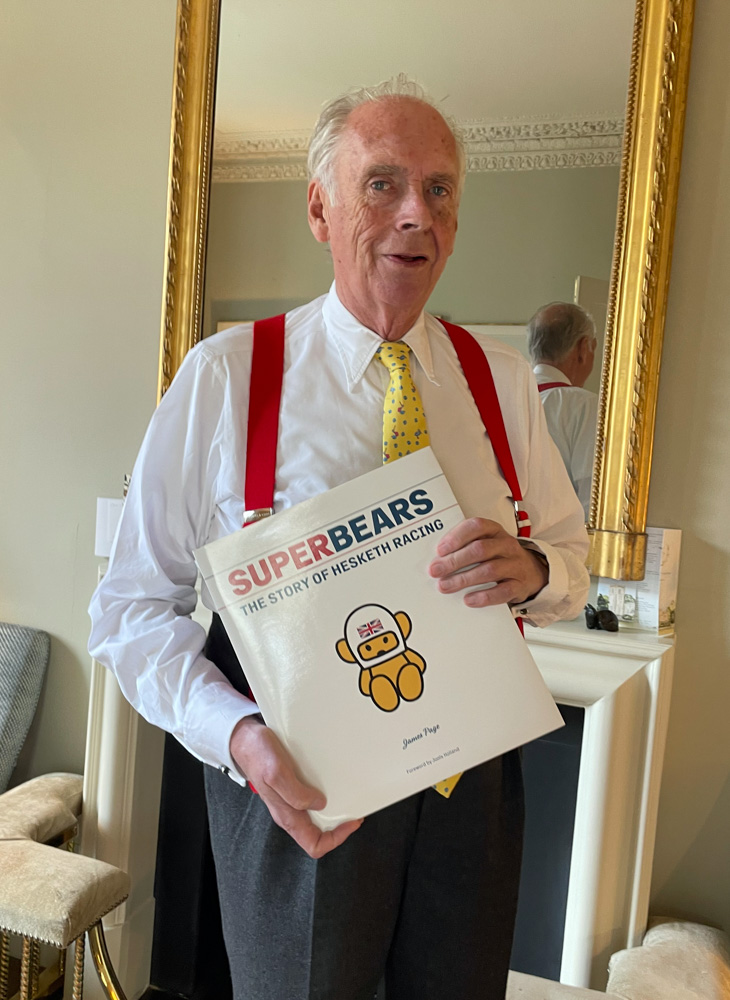
The story begins with a still young Lord Alexander Hesketh ( nicknamed Le Patron for 22 years because everyone in the team had a nickname and was usually addressed that way ) who, together with a childhood friend Anthony Horsley ( Bubbles ) , set up a Formula 3 team in 1972. Hesketh handles the finances and Horsley is the pilot/manager. A few months later, James Hunt ( Superstar ) is also recruited and it is even a two-car team. But Horsley is a better manager than pilot and decides to leave the driving to Hunt who certainly gets good results with a March 721M. As a result, a decision is made to switch to Formula 2 with a purchase of a Surtees TS15, fitted with a Ford engine, for the 1973 season. However, the Surtees cannot make a fist against the new March BMW team with Frenchman Jean Pierre Jarier. So what do you do? Buy a March BMW too? Wrong answer. Hesketh immediately buys a March Formula 1 Type 731 and makes his debut in the 1973 Monaco GP. This is unthinkable today but in the old days you could buy an F1 car and compete in the races you chose.
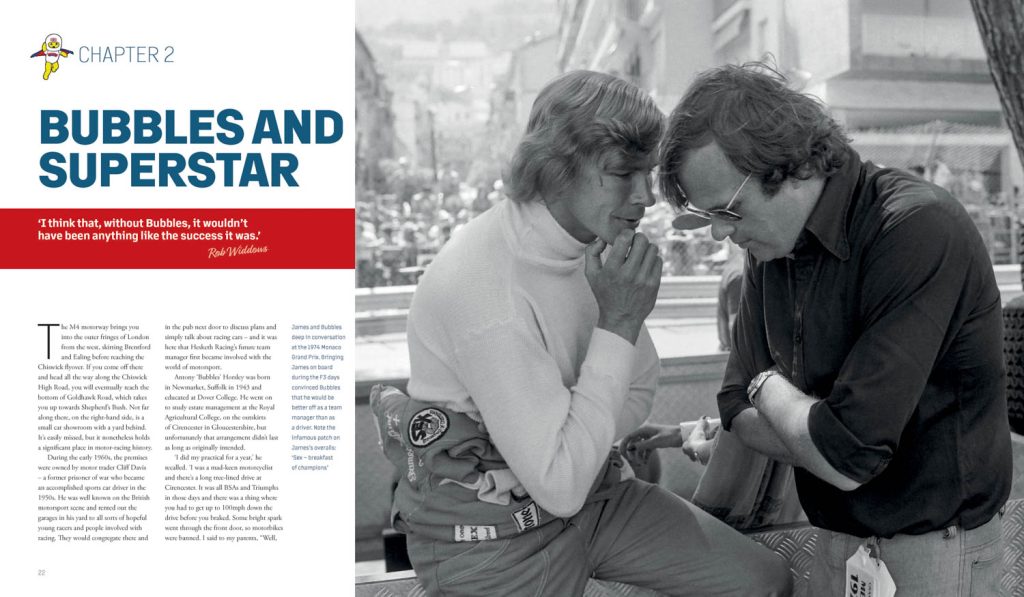
And the start happens in style: Hesketh invites a pack of guests to a large yacht in Monaco harbour. The guests are transported by Rolls Royce or helicopter from Nice airport to Monaco. From now on, everyone knows what Hesketh stands for. The small team led by young designer Harvey Postelwaite is immediately competing with the big boys. Postelwaite ( nickname Doc ) customises the March and they do even better than the factory cars. In the second race at Paul Ricard, Hunt scores a first World Cup point and at Silverstone it is even three and the fastest race lap. But things could be even better. In the final race at Watkings Glen, Hunt only has to get ahead of Ronnie Peterson’s Lotus and the season ends with second place.
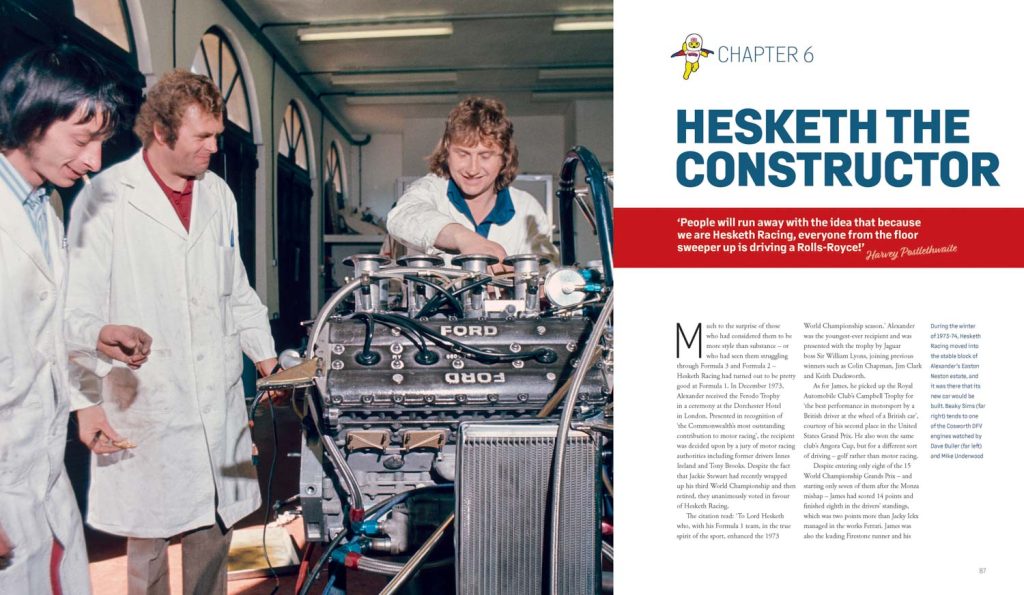
Plenty of euphoria and then what do you do? Buy a new car for next season? Wrong: you just build one yourself! Doc Posterwaite begins designing the first Hesketh Formula 1 in the horse stables of the Hesketh estate. But there is still a difference between building one or buying one, and development does take longer than expected. The first races of 1974 are still contested with the March 731 and the Hesketh 308 makes its GP debut in the South African GP at Kyalami with a conceded. The next race is the Daily Express International Trophy at Silverstone. This is a race outside the F1 championship and it is prize: Hunt and Hesketh win their first race but the rest of the season is difficult and there are many abandonments. Still, there are some good results with third places in Sweden and Austria. In Canada, Hunt finishes fourth and the season closes again at Watkins Glen. That circuit seems to suit the Hesketh because after a second place last year, they now finish third.
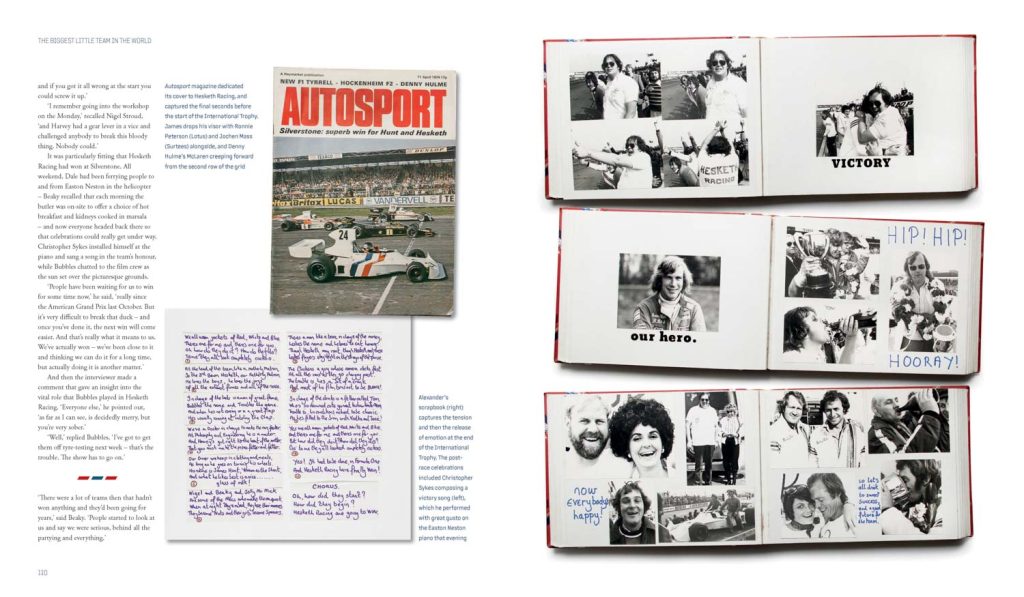
In 1975, the team sees things a little bigger: two extra cars are built ( now 308 B ) which are then rented out to potential customers. This sees future world champion Alan Jones make his debut on a Hesketh. The season starts fine in Argentina with P2 but this is followed by a host of abandonments due to accidents or technical problems. The moment of glory comes on 22 June at Dutch Zandvoort. Hunt might drive the race of his life there against Niki Lauda’s Ferrari. Started in the rain and on a drying track, he continuously sees a red Ferrari in his rear-view mirrors but James holds on and perseveres and wins the GP of the Netherlands. A historic moment for Hesketh, Hunt and Great Britain. And the train seems to be off with a second place in the French GP and a fourth in front of the home crowd at Silverstone. There is another second-place finish in Austria. But driving F1 costs money, lots of money. Continuing to finance the entire team is no longer an option for the Lord and a sponsor is being sought. Meanwhile, the new 308 C makes its debut in the Swiss GP with an eighth place. In Italian Monza, there is place five and at Watkings Glen they finish fourth.
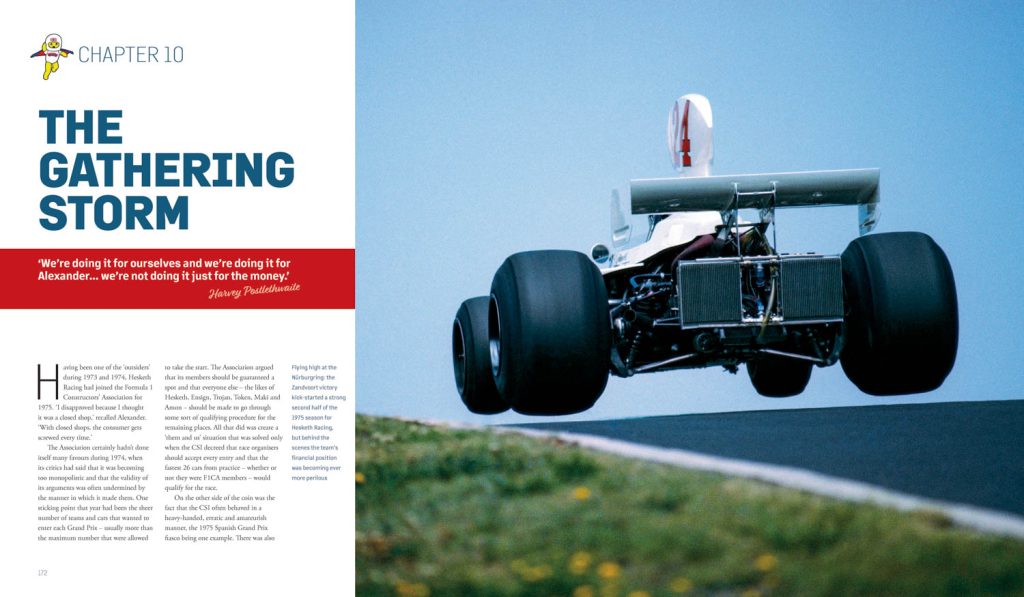
The potential sponsor is not found. Nothing else remains for Lord Hesketh to disband his team at the end of 1975. James Hunt goes to Mclaren and wins the 1976 world title in the legendary duel with Niki Lauda. Doc Postlewaite goes to Wolf and mechanics Frank Dernie and Nigel Stroud were welcomed with open arms at Williams and Lotus. There is another restart in 1976 with the old 308Bs but this is not really a success. This period is discussed in a separate chapter. This is also the case for the Hesketh motorbike of which a hundred or so were produced in the early 1980s.
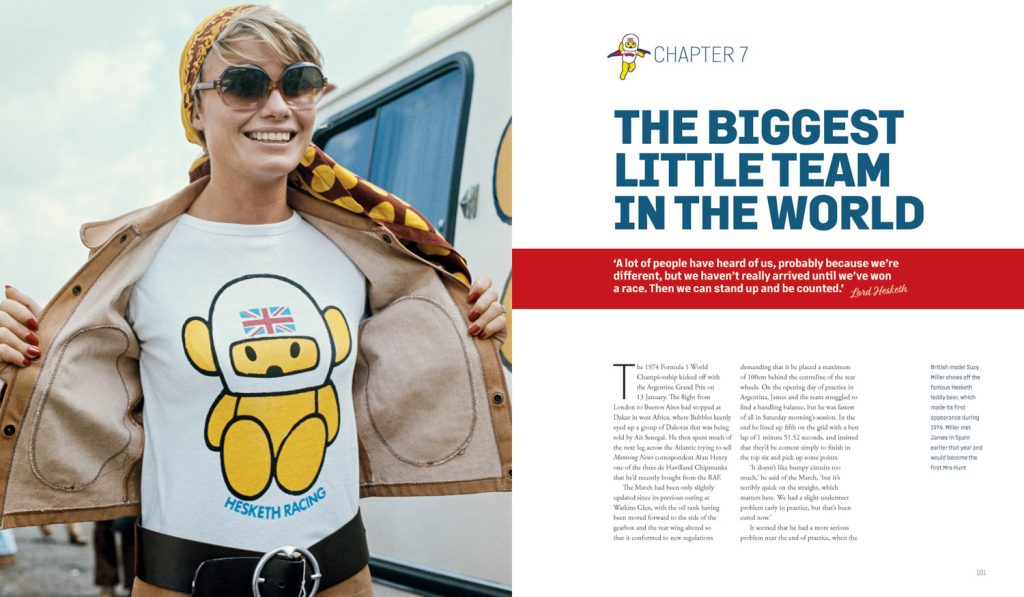
Author James Page spoke to all members of the Hesketh team about their personal experiences. “Le Patron” also assisted him as best he could with info and unpublished photo material. The book is of the well-known Porter quality and contains 264 pages with more than 280 photos. It is a story that definitely needed to be told and really everything is covered. It is fantastic how a small team of friends could play along at the highest level of motorsport for several years like this. This book about the “Greatest smallest racing team in the world” certainly deserves a place in the library of any motorsport enthusiast or Formula 1 fan. The combination of the small team’s friendship, achievements and jet-set states were never repeated by anyone again. Hesketh will always be remembered as the most charming team ever. And the white car without a single sponsor, which only featured start number 24, the name “James”, red/blue stripes and two Hesketh logos is unique.
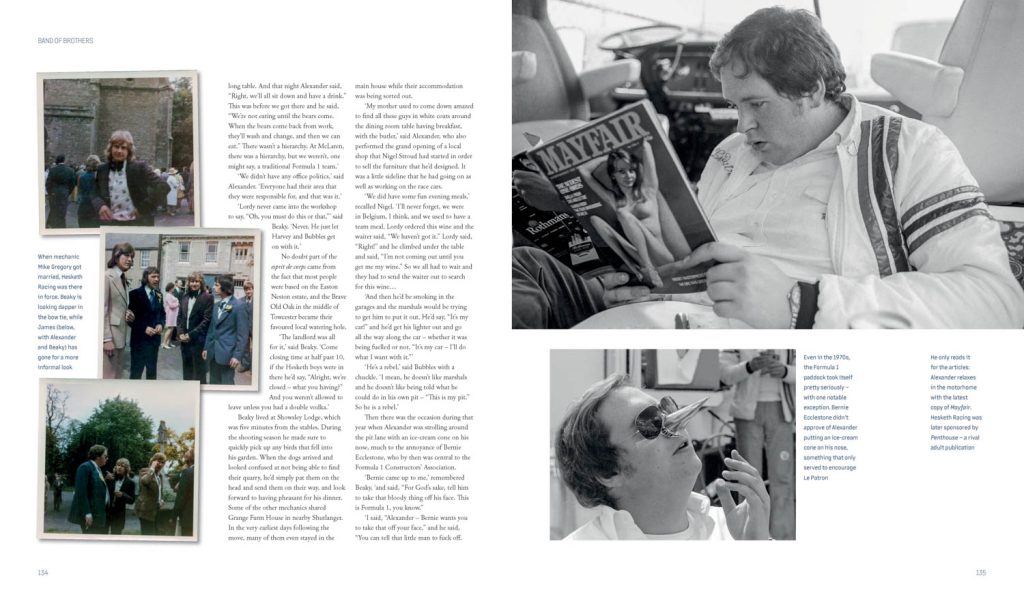
You can order this wonderful book from Porter Press at: www.porterpress.co.uk , or the bookstore with the ISBN number: 978-1-913089-33-7
